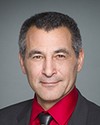The cost for fibre per kilometre is a tough one to answer. It ranges. We have some low precedents in areas along railways that we can trench. When you work in the High Arctic, it's really quite costly. I can provide the committee with that off-line.
In terms of upgrades to satellites, typically satellites are designed so that they are not upgradeable. Once they're in orbit, you can't upgrade them.
On new satellites, absolutely: the Nunavut project is using a brand new Telesat satellite, a Telstar 19 Vantage. It's providing 10 gigabits per second over Nunavut. We've actually 20 times the capacity in that territory. The satellite industry is evolving, so adding new satellites is absolutely a yes.
In terms of dishes, typically the bigger dishes have better received signals. We have some very large dishes in the north, some 10- to 12-metre dishes. With some of the new technology that's coming out, we're putting in four- or five-metre dishes. They are smaller. There's a lot of innovation on the dish size.
In terms of LEO, the big advantage we see with LEO is high bandwidth and low latency. Right now, the geosynchronous satellites we have result in a half-second communication delay. The new LEO satellites coming out will eliminate that delay. They give you an almost fibre-like experience. Those are some of the things that we're working on in the LEO front.
I'm pretty optimistic that if these plans materialize, in three or four years you will see a change in the telecom landscape in northern Canada.



